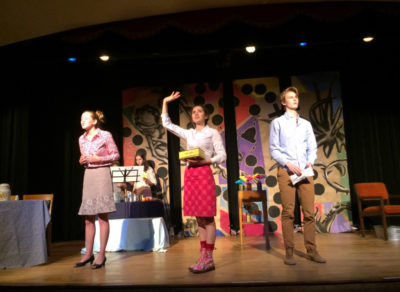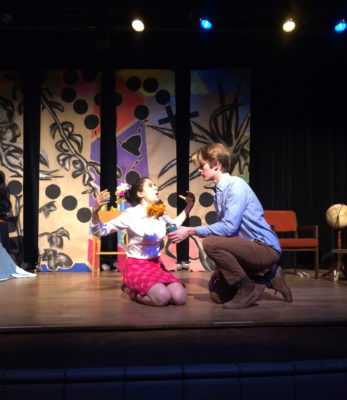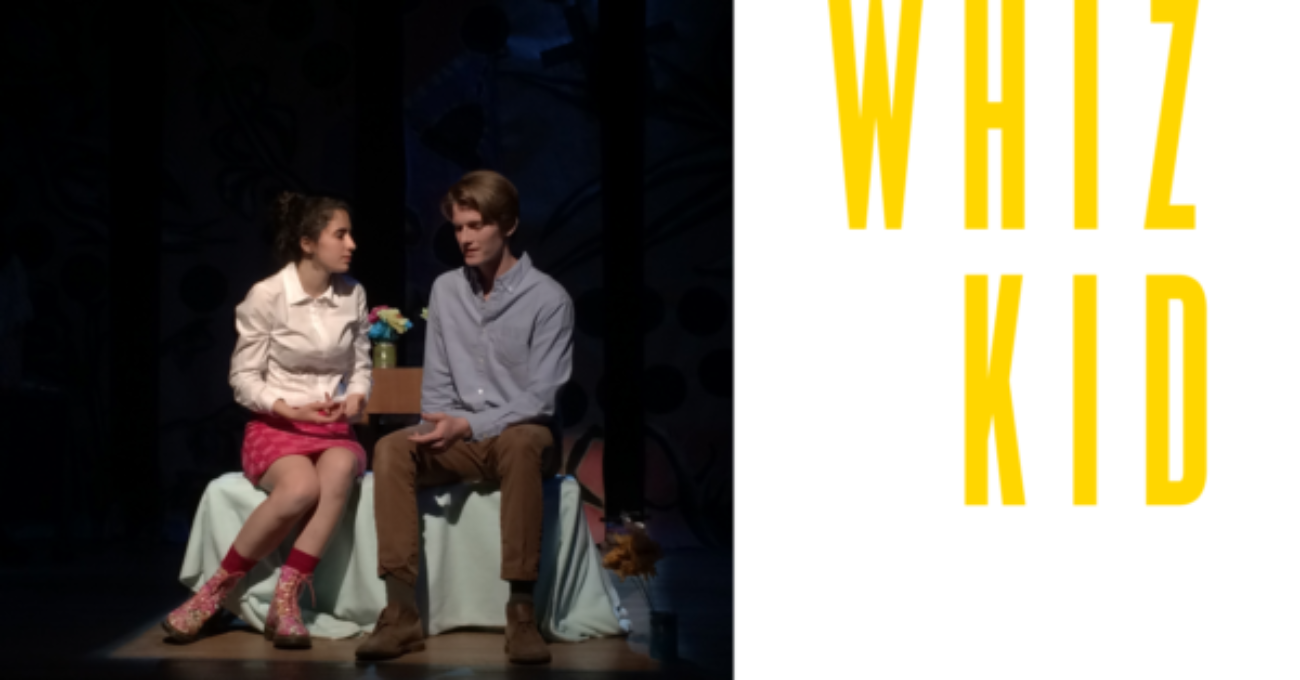Whiz Kid
18-year old El Paso high school senior, actress, director, playwright, singer and writer Alexandra Dipp’s recent performance of Garden of Fluorescent Flowers—a multimedia/hybrid performance—sold out at its premier at the Philanthropy Theatre. I had an opportunity to catch up with the multi-talented teen to discuss her accomplishments as a young director and what we could anticipate from her portfolio as she embarks upon her college career at Brown University this fall.
You recently acted, wrote and directed Garden of Fluorescent Flowers on April 10. Tell us about the piece.
Garden of Fluorescent Flowers is a multi-media hybrid art form, and utilizing theater, film, movement, music, animation, and poetry, the performance works to elaborate on the concept of contemporary expression. By dissipating the boundaries of art, we can further establish how to break the predetermined borders.
The title of this play seems almost psychedelic in nature, how did you arrive at the name?
The title Garden of Fluorescent Flowers alluded to the concept of the fluorescent element, a noble gas on the periodic table. The noble gases do not react with others…they do not need any [more] electrons; they are complete. The performance’s main theme was the desire to be independent. The noble gases are self-sufficient. The characters yearn to be fluorescent; they yearn to be whole.

You seemed at ease with the responsibility of wearing multiple hats in this production—what is your theater background?
Since the third grade I have participated in theater. In performing for various community theater community groups (including El Paso Opera Company, Frontera Repertory Theatre, and EPCC), I was able to grow as a theatrical artist. When I founded Youth Collaboration of the Arts in my freshman year, an opportunity to write, direct, produce and act in a comprehensive manner ramified. So far, I have directed and produced four original productions through YCA.
Do you feel you are tapping into a genre that hasn’t been investigated?
Since this piece was not traditional theater, but rather a collection of six different art forms, Garden of Fluorescent Flowers created an explorative art form that redefined the once divided art making techniques.
Your plays seem to be thematic to issues affecting border areas—a cultural theme. Can you expand on the connection that also intertwines the art world?
The past three productions were more theatrical and based in a narrative. Red and Black, our first production, dealt with the Los Angeles Riots’ effect on the city’s youth art scene. Moving Stillness was a dramatic play working towards the investigation of place and environment. Cardboard House Dreams depicted a story of the daily migration of children from Anapra, a colonia in Juarez.
What’s next in your theatrical world?
As for future performance ventures, YCA plans on creating a film about the pseudo-purgatory of the borderland in reference to a contemporary genesis. This screenplay is in the works, but we hope to utilize performance with the video.
Is this your perception of the pseudo-purgatory along the border or is it the perception of those individuals along the border?
The concept of a pseudo-purgatory and contemporary Eden are both personal perceptions of the human condition from my interpretation. As humans, our insatiable desire to remain in movement forces us to live in perils and conflicts, attributing to a zone of mediation that lacks the ephemeral bliss of a heaven. Thus, anthropogenic causes have created intangible and palpable borders on the frontera, causing a general displacement and migratory existence.
The contemporary Eden has to do with civilization—do we create or revert to a Genesis in order to reclaim paradise? By creating our paradise we coin progresses, evident in visceral ventures. In reverting to our Genesis we rely on stagnant facts to stabilize our bearings in the ever-fleeting moment. Thus, I am attempting to analyze how we achieve paradise in our nomadic drift.

You articulate better than many adults…what do you attribute that to?
The countless hours of discussion and discourse in my household, school, and community has allowed me to critically analyze context and form realizations about the world. Thus, I am endlessly appreciative to my family, mentors, and teachers for initiating an insatiable attention to conceptualizing and cultivating ideas.
Tell me a little bit about Youth Collaboration of the Arts and how does it sustain?
Youth Collaboration of the Arts is devoted to community advocacy. When I founded the art group during freshman year of high school, the hope was to offer an opportunity for young artists throughout the community to develop skills of cooperation, disciplined work habits, and effective problem-solving through the creation of quality multi-media art. We attempt to alter the presumed notions in our community through artistic investigation, a venture which proposes inventive solutions to worldly divides. All profits from productions benefit community organizations, connecting artistic advocacy with contextual implementation. We are planning on continuing Youth Collaboration of the Arts after I leave.
Much of the proceeds from you events are donated back to the community. Who receives these gifts?
We have donated to Via Maria, the Annunciation House, a First Presbyterian Christian Preschool, UTEP, and Frontera Repertory.
I understand you have been looking at school on the East Coast for college. Do you have set plans?
I was fortunate to have been given the opportunity to partake in the Brown-RISD Dual Degree Program. This program will allow me to acquire a B.A. from Brown University and a B.F.A. from Rhode Island School of Design within a five-year period.

